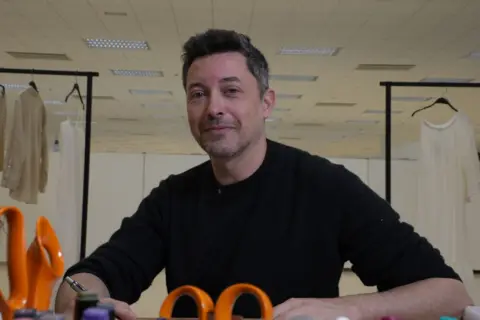Zara, a prominent name in the global fashion industry, is renowned for its unique business model and rapid response to changing market trends. Its journey began fifty years ago in A Coruña, Spain, under the visionary leadership of founder Amancio Ortega. Unlike many traditional retailers that typically launch biannual collections, Zara has revolutionized the fashion landscape by introducing new products on a weekly basis. This agility allows Zara to address customer preferences swiftly, commanding a prominent position in high street fashion.
Zara operates under the ownership of Inditex, the world’s largest fashion retailer, which encompasses other popular chains such as Massimo Dutti and Pull&Bear. The brand’s strategic framework involves a remarkably efficient supply chain, relying on approximately 1,800 suppliers worldwide. However, most of its clothing is transported to Spain, where it is dispatched to retail outlets in 97 countries, ensuring that customers have consistent access to trendy products.
Despite its formidable presence in the fashion market, Zara is characterized by a notable absence of traditional advertising and a deliberate choice to minimize media visibility. To mark its fiftieth anniversary, select journalists, including Emma Simpson, were granted a rare opportunity to explore the extensive Zara headquarters in Galicia, Spain—a glimpse into the inner workings of a brand often shrouded in secrecy. This visit highlighted the company’s strategic moves in a landscape increasingly influenced by competitors such as Shein and Temu, who undermine Zara’s pricing with ultra-affordable offerings.
Inditex’s CEO, Oscar Garcia Maceiras, expressed confidence that external factors like US tariffs would not hinder Zara’s operations or its expansion in the American market, which has emerged as its second-largest market. He emphasized the company’s commitment to diversifying production across nearly fifty countries, showcasing their adaptability in a fluctuating market.
Designers like Mehdi Sousanne, who has been instrumental in shaping Zara’s seasonal clothing lines, emphasize the importance of creativity over rigid guidelines. His insights into inspiration—drawing from street culture, cinema, and runway trends—illustrate Zara’s commitment to remaining relevant. This creative process intertwines with a meticulous production system, wherein designs are quickly transformed into fabric samples, allowing for immediate evaluation by seamstresses and pattern makers like Mar Marcote, who brings decades of experience to the table.
Zara’s operational prowess shines in its ability to release new items frequently, a marked change from the traditional seasonal collections that dominated retail. The company produces about fifty percent of its clothing in nearby locations such as Spain, Portugal, Morocco, and Turkey, enhancing its speed to market significantly. This close-to-home manufacturing strategy allows Zara to turn around products within mere weeks, catering to current trends and consumer demands.
Additionally, Zara employs sophisticated logistics and data analytics to refine its product offerings continuously. Real-time sales data from global stores informs designers and product managers, enabling Zara to modify collections in response to customer feedback. This data-driven approach ensures optimal product placement and minimizes the need for discounts, routinely limited to seasonal sales.
Looking forward, Zara faces increasing pressures to maintain its market position. Analysts note a dip in sales growth, with competition intensifying from both established rivals like H&M and emerging disruptors such as Shein, which recorded substantial global sales recently. Maceiras acknowledged that while competitive pricing is critical, Zara’s identity lies in providing high-quality, creative fashion that inspires consumers—a commitment to excellence that has characterized the brand since its inception.
Despite the challenges, Zara remains firmly rooted in its founding principles, with Amancio Ortega’s legacy continuing to influence operations. Now age 89, Ortega’s presence—both physically and morally—resonates throughout the organization, reflecting the enduring spirit of innovation and quality that the brand embodies. As it navigates a rapidly evolving fashion landscape, Zara’s combination of speed, data-driven strategy, and a consistent focus on quality may continue to set it apart in the competitive retail space.



